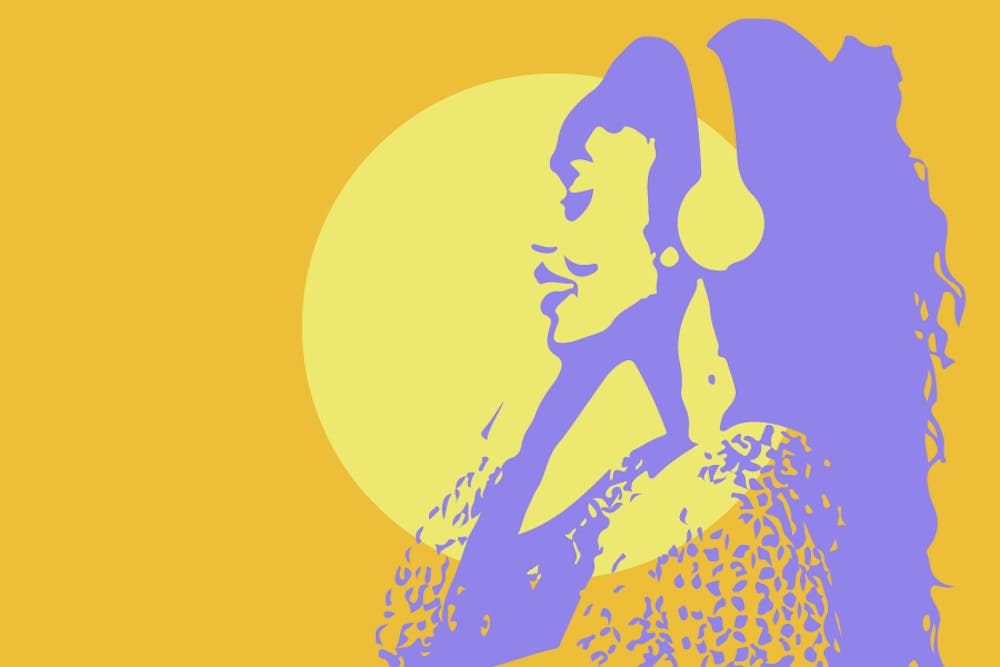It all began with “Couer D’Alene” by The Head and the Heart, at the start of my most transformative year of high school. I didn’t quite know what I was in for, but I found optimism in my uncertainty within and through these lyrics: “There’s no use knowin’ / Which way the wind is blowin’ / My mind’s made up, I‘m doin’ this, I’m doin’ this.” On Sept. 7, 2018, I added “Couer D’Alene” to a Spotify playlist that I later labeled “September ‘18.” After the September playlist came an October one, and not a month has passed since without a corresponding monthly playlist.
My monthly playlists are my security blanket. I know that they belong to me and that nobody else, despite how many genres or artists we have in common, will share the same songs or the feelings they evoke inside of me.
I find so much nostalgia in my old music. I remember the songs I blared in the shower, the songs I dried my eyes to, and every other song that's now permanently adhered to a feeling I just can't shake. My monthly playlists are my special way of documenting my favorite memories. They are more than photos and letters telling stories of the people I’ve met and the places I’ve been; They are the songs playing in the background of my life, portals to my own personalized time machine.
In April 2019, I rediscovered what soon became my favorite song “This Must Be The Place” by Talking Heads, and it found a home on my “April ‘19” playlist. Sometimes, I shuffle this playlist yearning to relive the moment David Bryne’s lyrics clicked, and I was finding love all around me. My senior quote, “Feet on the ground / Head in the sky,” is a token of appreciation for April 2019 and the song it gave to me.
In the last few years, music streaming services recognized that many of their users, like myself, rely on music for nostalgia. Homemade playlisting is not only a way to reflect on our musical past; It also allows musicians to overcome algorithm–generated playlists that tend to favor certain artists.
Spotify has begun to capitalize on our love for music and the sentimental purpose that playlists can serve. Each December, Spotify users receive an early holiday gift: a playlist called “Spotify Wrapped,” containing their 100 most–listened–to songs that year. Spotify puts Apple Music Replay—Apple Music's attempted equivalent to Wrapped—to shame. The Instagram story–esque screens, bursting with color, are a testament to our year in music: the artists we discovered, the “auras” of our most suspicious crossovers (mine being Adrianne Lenker and Megan Thee Stallion), and the number of minutes we spent with the most consistent friend we’ve ever had. Just when we thought Wrapped couldn’t get any better, Spotify surprised us with Wrapped Blend in 2021, a year–in–review of the music we have in common with friends. At the end of the blended excitement, Spotify assigns a percentage to a pair’s music compatibility.
While my friends and I count down to esteemed “Spotify Wrapped Day” each year, Wrapped will never hold a candle to my monthly playlists and the love I have for them. I can look back on my year without Spotify’s dated buzzwords: the references to attaining “main character” status and being told that my song choices “understood the assignment.” Through my playlists, I can remember the smaller moments with songs that didn’t make the top 100.
My December 2020 playlist captures a time of immense change in my life. The same day I visited Penn’s campus by myself for the first time, Maggie Rogers released an album that eventually became a favorite of mine: “Notes From the Archive: Recordings 2011–2016.” I walked down Locust listening to “Resonant Body.” I felt gratitude for my resonant body “in the freckles and old scars / and the lines I have hid.” I took a moment to smile to myself and let a few tears of joy stream down my cheeks.
A year later, the songs that compose my monthly playlists—my musical diary—are the ones that will one day remind me of my time here. The songs I’ve listened to walking to class, visiting home, finding new love, and sitting around my dorm room laughing until I can’t breathe.

